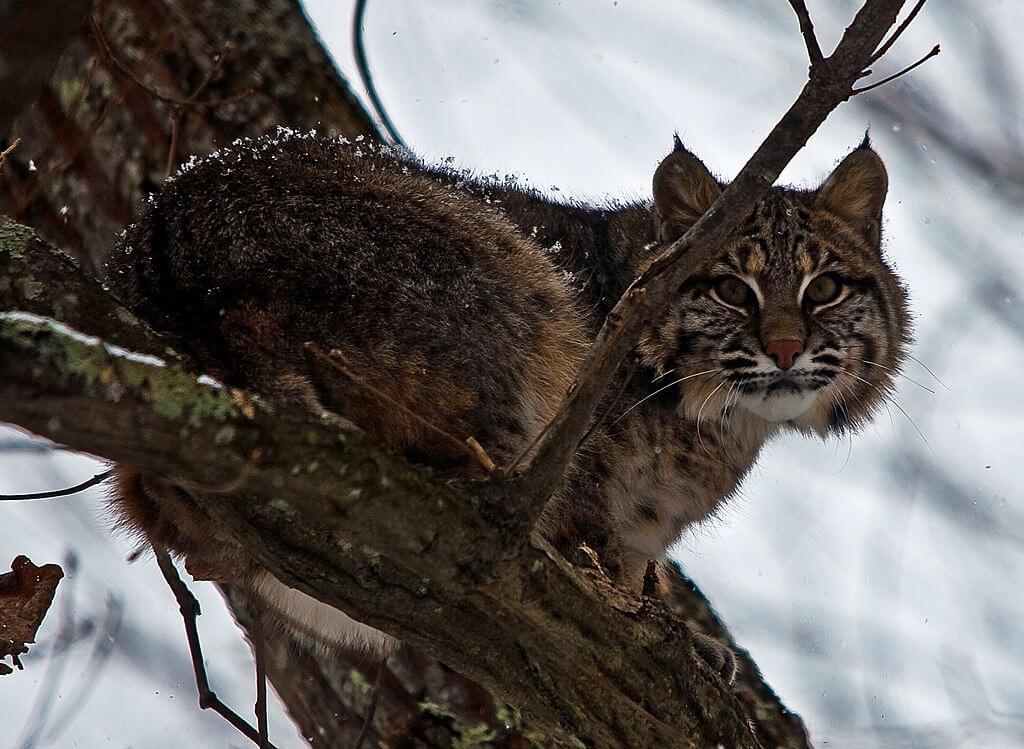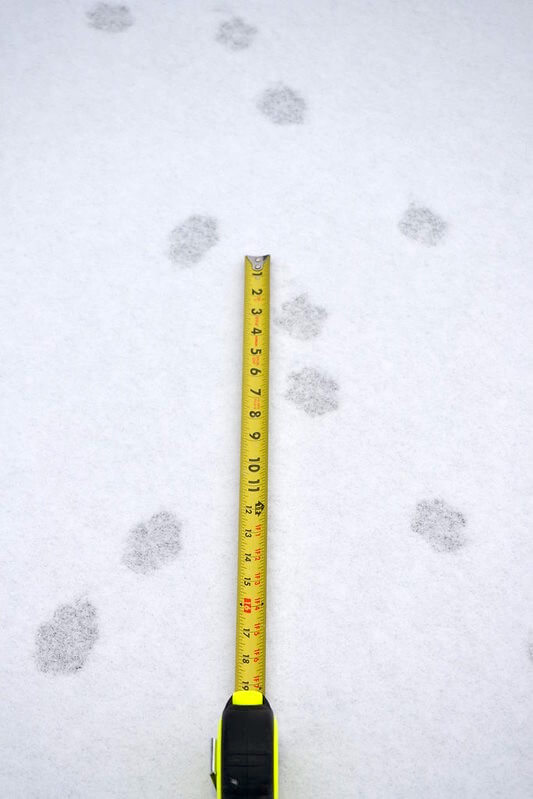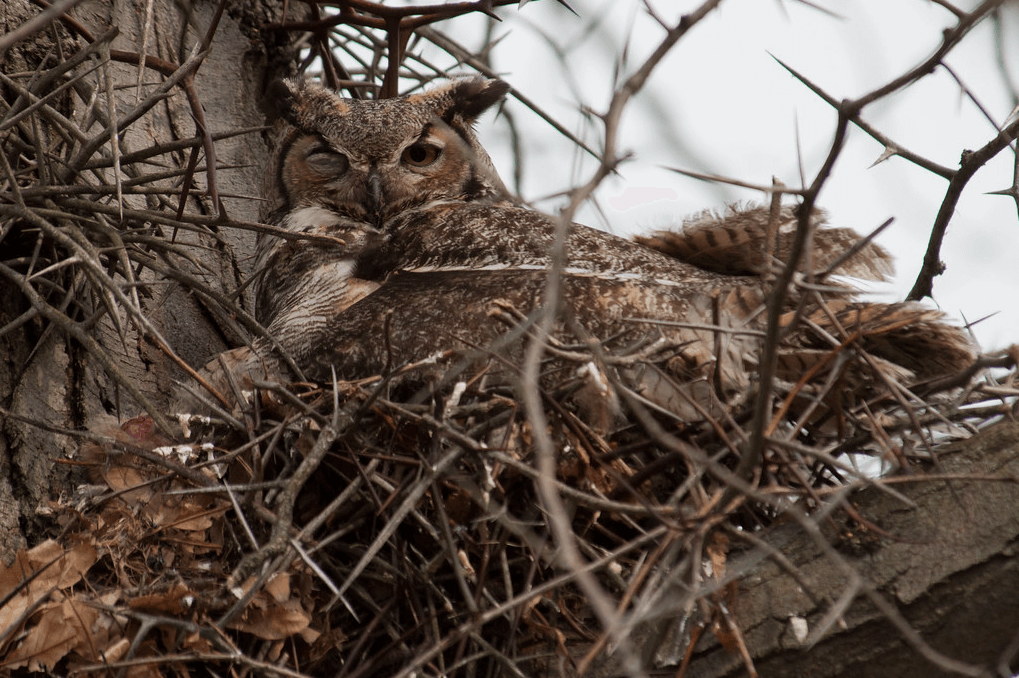Do Bobcats Kill Deer? Field Notes Investigates.
by Ellen Knight
Broadcast 2.2016, 2.2019, and 12.14 & 12.17.2022

A bobcat perches in a tree, nearly camouflaged. Photo by ForestWander Nature Photography, forestwander.com, CC BY-SA 3.0.
Listen:
Bobcats are relatively common in patchy habitats all across the U.S., but we don’t see them often because they are crepuscular or nocturnal and well camouflaged. But after a recent bobcat sighting, I’ll be on the lookout for bobcats much more than I have before.
Last week I was out walking along the snowy creek-side trail up the Rattlesnake Recreation Area north of Missoula when I chanced upon a young friend of mine, Andrea Stephens. Andrea is a naturalist and educator for Swan Valley Connections just north of Seeley Lake. She was sitting in the snow on a short steep hillside looking off into the near trees. “Are you seeing something?” I asked. She pointed ahead of her to a bobcat lounging on the branch of a Douglas-fir, about 20 feet up, just about eye level with our view from the hill and only about 30 feet away from us.
With soft grey fur speckled with random brown spots, she was well camouflaged despite her also-speckled paler belly fur. From our close vantage point it had still taken me a minute or so to see her even with Andrea pointing her out behind a few overhanging small branches.
The bobcat sat still for quite a while, but eventually—to our great excitement—we saw a medium-sized kitten poke its head out from behind her, their marvelous and seemingly-calm faces turned right to us. A kitten? In the depths of winter? Bobcats usually breed mid-February through mid-April in Montana, with kittens born 50-60 days later. However, they can breed all year and sometimes do. Perhaps this kitten was a late-season birth.
Sleuthing about before I arrived, Andrea had discovered a cached adult deer at the base of the tree, all covered with grass and snow. Could the bobcat, who normally preys on rabbits, hares, birds, and small mammals, possibly have killed the deer? They are only about twice the size of a house cat and weigh no more than 35 lbs. Killing a deer would be quite a feat!
Andrea had noted that the deer’s legs were somewhat disjointed but the bones were not cracked to reach the nourishing marrow. Since bobcat jaws are not strong enough to break the deer’s bone, there was one point in support of the bobcat killing the deer.
I asked local experts if little bobcats ever kill deer. “Yes,” was the answer—but not often, and it would be a tough battle. Further, the bobcat would not linger around if it had been a mountain lion’s deer. So there was another point in possible support. There are many deer in our neighborhood, and lots of cars whizzing along Rattlesnake Drive, so another strong possibility is that the deer might have been hit and wounded, thus making a bobcat kill more feasible.
Still, I’m impressed and I’m told this is an incredibly rare event.
I explored along the trail again the next morning. The bobcats were gone and the deer was mostly devoured. The stomach, uneaten, was lying on the snow adjacent to the carcass, but the magpies and crows were raucously enjoying picking the bones of the feast.
I am continually amazed and in total wonderment at the wildlife we have here in Montana, even in our own backyards. Bobcats are relatively common, in patchy habitats all across the U.S., but we don’t see them often because they are crepuscular or nocturnal and well camouflaged. But after this experience I will be poking around for those small, 2” roundish tracks and looking up, about 20 feet, much more often than I used to, hoping to see another bobcat someday, lounging on a branch.

Bobcat tracks in snow. Photo courtesy Virginia State Parks, CC 2.0.
Every week since 1991, Field Notes has inquired about Montana’s natural history. Field Notes are written by naturalists, students, and listeners about the puzzle-tree bark, eagle talons, woolly aphids, and giant puffballs of Western, Central and Southwestern Montana and aired weekly on Montana Public Radio.
Click here to read and listen to more Field Notes. Field Notes is available as a podcast! Subscribe wherever you listen to podcasts.
Interested in writing a Field Note? Contact Allison De Jong, Field Notes editor, at adejong [at] montananaturalist [dot] org or 406.327.0405.
Want to learn more about our programs as well as fun natural history facts and seasonal phenology? Sign up for our e-newsletter! You can also become a member and get discounts on our programs as well as free reciprocal admission to 300+ science centers in North America!












